How to Choose High-Quality Shoes
One ought to know several tricks to help them choose the best option in order not to end up feeling disappointed after buying a pair of shoes.
We at 5-Minute Crafts want to share some useful tricks about how to choose different types of shoes correctly.
Benefits of using high-quality shoes
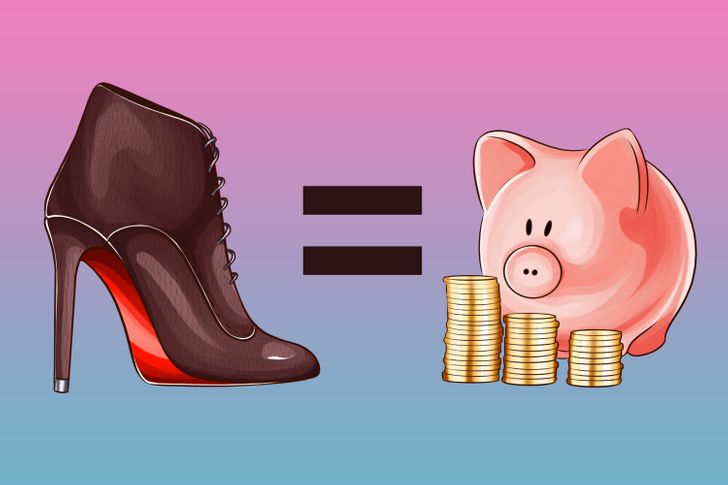
- Such footwear looks nice and increases your self-esteem. This stylish look matters, especially when creating a first impression. Good sneakers motivate you to start doing sports, and top-notch shoes can give you confidence at a job interview or on a date.
- Such shoes are comfortable. We mean, really comfortable. They don’t rub your feet, they don’t cause cramping, etc. Not only are high-quality shoes convenient to wear, thanks to the material they are made of, but they also help keep the feet and legs healthy. Genuine leather shoes adjust to the shape of your feet and help you avoid discomfort and unpleasant issues, such as bursitis, calluses, pain, or injury.
- Leather shoes let feet breathe, which prevents bad smells. This is all because genuine leather is a material with excellent absorbency and breathability, and it’s capable of wicking moisture and allows your feet to breathe.
- They help save you money. Poor quality shoes will wear out faster, while quality shoes will last much longer. Though you can buy several pairs of inexpensive faux leather boots for the price of a pair of real leather boots, and they may even look just as good, quality shoes will be much more comfortable due to their construction.
How to find footwear of good quality
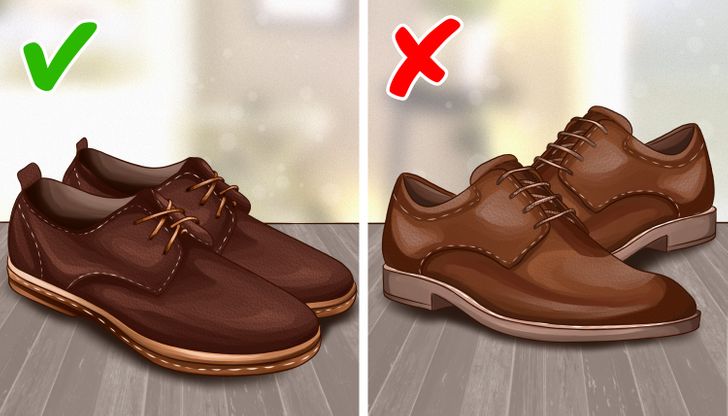
The upper part of such footwear should be made of genuine leather. The upper part is everything that is above the sole. The quality of the upper part affects the wearability of your shoes and their look in the future. Low-quality footwear contains cheap materials, such as plastic, low-quality leather, and thin suede. Not all leather is the same, and this especially relates to men’s shoes. Examine the texture of the leather. It can be the following:
- Full-grain is leather of high quality.
- Top-grain leather is leather where surficial defects have been removed.
- Corrected natural leather is sanded and chemically proceeded to obtain a smooth surface.
How to choose the correct footwear:
- Sniff the boots. The smell of genuine leather is very different from the smell of faux leather. Leather should smell rich, earthy, and slightly sweet. Pure leather is processed naturally and should have a soft smell, and it shouldn’t irritate your nose.
- If you can see pores on leather upon closer inspection, it’s likely made of whole-grain leather. You can use the zoom on your phone’s camera to check their size. The pores should be large.
- Quality footwear is almost always sewn. It means that the upper and the lower parts will be sewn together with thread. You can replace the soles if they lose their look.
What things should alert you:
- The absence of pores means that the outer side of the skin was polished, which makes its quality lower. As a rule, footwear made of low-quality leather will have a slightly plastic and unnaturally smooth appearance. Cheap leather leaves folds, loses its color, and starts to peel off over time.
- The price is too low. High-quality leather costs a lot, and manufacturing shoes from this material is a complicated and time-consuming process, which is why quality leather footwear doesn’t come cheap. It shouldn’t be the only factor when making a decision about purchasing boots, but still, it’s worth taking this point into account as well.
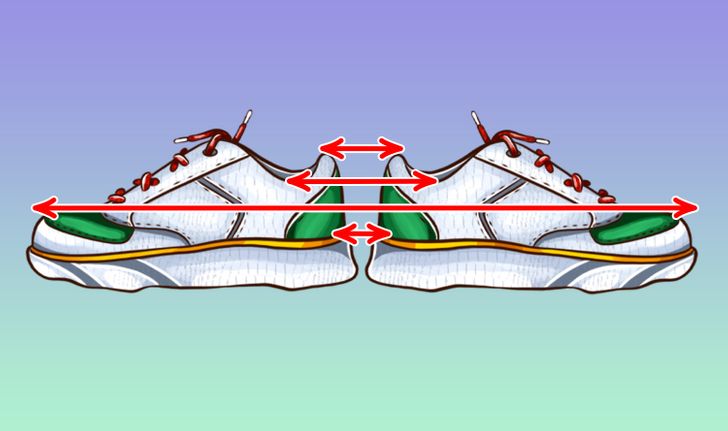
How to choose the correct footwear:
- Check the package. Does the name of the model correspond to the name indicated on the label? Does the box look presentable?
- Check the symmetry of the sneakers. Both sneakers should match perfectly. It relates both to the color and to the decor. Make sure the upper part of the sneakers sits on the sole properly. There should be no displacement.
- Check the side part of the midsole for the presence of wrinkles. Examine the seam that connects the upper part with the sole. Pay attention to the presence or the absence of extra glue on the upper part. It shouldn’t be there in quality sneakers.
What things should alert you:
Tracking boots
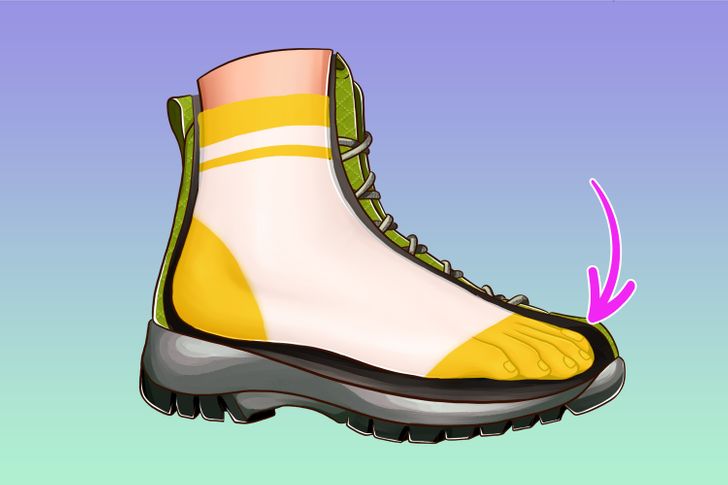
How to choose the correct footwear:
- Choose boots according to the terrain that you’ll be tracking on and to the load they’ll have to carry. If you are going to lug a heavy backpack, choose the lightest boots.
- It’s important to choose shoes that are right for your foot in order to avoid issues like calluses, dislocated feet, etc.
- Ignore your usual shoe size and choose boots only after trying them on. This may mean that you should buy a pair one size larger or smaller than your usual size.
What things should alert you:
- Don’t buy boots if their narrow nose cramps your toes.
- If your foot feels too loose inside the boot, the issue can be in the insole. The insole prevents the curvature of the foot inside the boot by keeping the sole in a neutral position. If it is poorly fitted, it can provoke the appearance of painful spots on the heel and ball of the foot during the hike, pain in the arch of the foot, as well as constant heel slip.
- Tongue padding should be ample yet relatively stiff to prevent the “cutting” feeling from tight laces. The stiffer the sole is, the softer the tongue padding should be. Unfortunately, many manufacturers save on tongue padding materials.
How to prepare boots for tracking:
- Polish them with wax so that the moisture doesn’t get inside.
- Regularly check and fix your boots before another tracking session.
- Take into account that water spoils leather and can lead to the shrinking of the boots.
Shoes
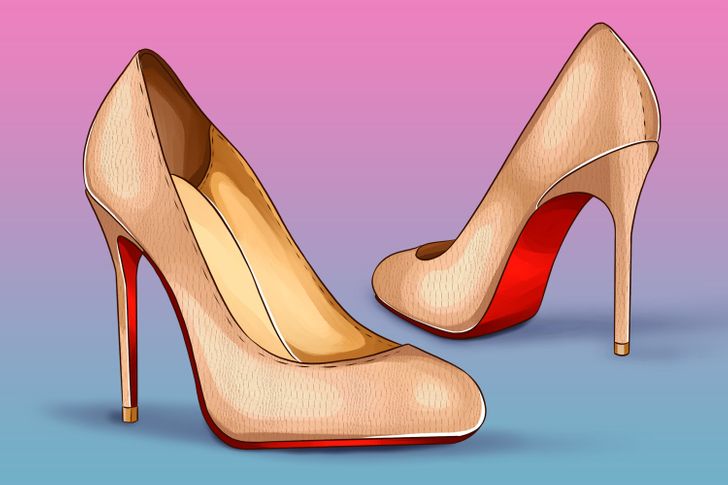
How to choose the correct footwear:
- The sole is one of the most important parts of shoes. Pay attention to how the sole attaches to the shoe. If it’s sewn on, make sure the stitches are straight and secure. If it’s glued, make sure there is no place around the edges where the sole can start to peel off.
- Pay attention to the heel. A sturdy heel is less likely to snag on objects and less prone to abrasion. When buying, pay special attention to this part of the shoe: it should not wobble or shift.
What things should alert you:
- The inner sole is poorly glued, and you can see the traces of glue. You can uplift the inner sole with your nail. You shouldn’t have a feeling that there is nothing between the sole and the inner construction. There should be some kind of insulation or a small layer of padding, otherwise, your heels and pads will hurt, and your shoes will wear out faster. In high-quality shoes, the insole is usually made of leather rather than synthetic material, and it covers the entire inside of the shoe. If the shoes have a lining only on the bottom, but not on the sides, it means they won’t be so comfortable.
- The insole should be made of natural material. Leather absorbs moisture and allows your feet to breathe, while synthetics, such as vinyl, don’t absorb moisture and are less comfortable.
- Make sure to check the inside part of the shoes when buying closed-toe or open-toe shoes, the outer part of which has a piece of fabric, such as a decoration strap, for example. All the elements should be of quality.
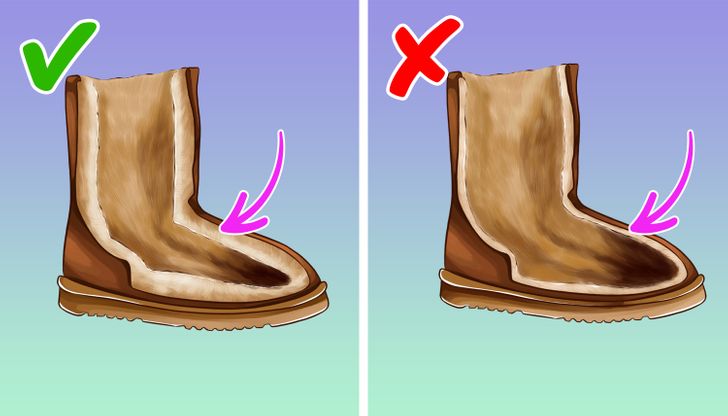
How to choose the correct footwear:
- Make sure to always check the inside label sewn into the UGG boots or the information on the online list to learn where the UGGs were manufactured.
- Quality UGG boots are manufactured with the highest quality sheepskin in Australia. Therefore, their price will be quite high. Consider this factor when making a purchase.
- Choose the right size. These boots should fit your feet snugly as they stretch for up to half a size with wear.
What things should alert you:
- There shouldn’t be visible glue on the boots’ soles or around them. Threads should not be sticking out. The presence of small holes, scratches, and marks on the suede part should cause doubts in you. If any of these manufacturing defects or oversights are present, the UGG boots are probably of improper quality.
- Pay attention to the sheepskin inside. In low-quality boots, its layer might seem thin and stiff. It won’t provide warmth and comfort, which are characteristics of good-quality UGGs.